Physics at the Frozen Fringe
If you Google "Gerald Feinberg, physicist" and look for a picture of him, the first one you're likely to see is this: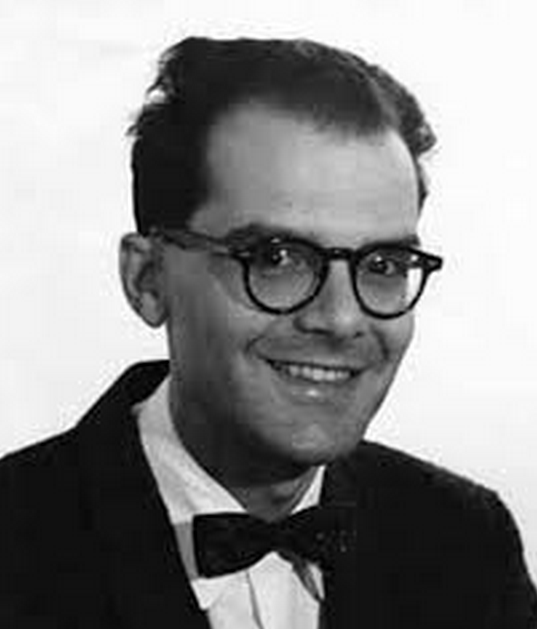 There's that look. While the smile is wry and self-assured, the eyes are mischievous, even somewhat maniacal. Like Feinberg has glimpsed something so utterly amazing that he can't wait to tell you about it.Born in New York City in 1933, Feinberg took his B.S. in physics from Columbia at the age of 20 and then stayed on for graduate work. His advisor was Tsung-Dao Lee. A theoretical physicist, T.D. Lee had a reputation as a demanding mentor but Feinberg met the challenge, graduating with his Ph.D. - the 1957 thesis was titled "Meson Production in Nucleon-Nucleon Collisions" - after just four years of study. After a short stint at the Institute for Advanced Study, he returned to Columbia as an assistant professor.Feinberg's research specialty was theoretical particle physics. He saw his first big breakthrough early - in 1958, he argued in Physical Review for the existence of two kinds of neutrinos. At the time, physicists believed these sub-atomic particles were associated with electrons. Feinberg's paper suggested that neutrinos could also be associated with muons, a heavier and less common subatomic particle. Four years later, three of Feinberg's colleagues experimentally confirmed this prediction, work which won them the 1988 Nobel prize. ((These were Leon Lederman, Melvin Schwartz and Jack Steinberger.)) Promotion to full professor and fellowships followed for Feinberg.
There's that look. While the smile is wry and self-assured, the eyes are mischievous, even somewhat maniacal. Like Feinberg has glimpsed something so utterly amazing that he can't wait to tell you about it.Born in New York City in 1933, Feinberg took his B.S. in physics from Columbia at the age of 20 and then stayed on for graduate work. His advisor was Tsung-Dao Lee. A theoretical physicist, T.D. Lee had a reputation as a demanding mentor but Feinberg met the challenge, graduating with his Ph.D. - the 1957 thesis was titled "Meson Production in Nucleon-Nucleon Collisions" - after just four years of study. After a short stint at the Institute for Advanced Study, he returned to Columbia as an assistant professor.Feinberg's research specialty was theoretical particle physics. He saw his first big breakthrough early - in 1958, he argued in Physical Review for the existence of two kinds of neutrinos. At the time, physicists believed these sub-atomic particles were associated with electrons. Feinberg's paper suggested that neutrinos could also be associated with muons, a heavier and less common subatomic particle. Four years later, three of Feinberg's colleagues experimentally confirmed this prediction, work which won them the 1988 Nobel prize. ((These were Leon Lederman, Melvin Schwartz and Jack Steinberger.)) Promotion to full professor and fellowships followed for Feinberg.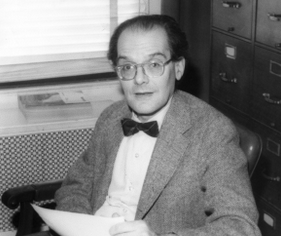 Then in the mid-1960s, Feinberg started to speculate on the scientific possibilities of prolonging human life. Although I can't prove it, I suspect Feinberg was influenced by reading the 1964 book The Prospect of Immortality by Robert Ettinger.
Then in the mid-1960s, Feinberg started to speculate on the scientific possibilities of prolonging human life. Although I can't prove it, I suspect Feinberg was influenced by reading the 1964 book The Prospect of Immortality by Robert Ettinger.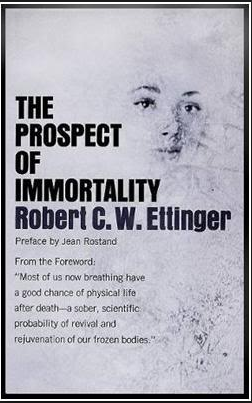 Born in 1918, Ettinger was a science-fiction fan as a teen. He was especially keen on a 1931 story in Hugo Gernsback's Amazing Stories called "The Jameson Satellite". In it, the corpse of a scientist is sent into orbit where the coldness of space preserves it until it is reanimated by a race of part-machine, part-organic cyborgs. Ettinger later learned physics at Wayne State University where he later taught.After dabbling in some sci-fi writing himself, Ettinger self-published Prospect in 1962. In it, Ettinger made the case for cryonics - the idea that humans, if kept sufficiently cold after their death, might one day, after sufficiently robust medical advances, be revived.Two years later, perhaps persuaded by interest from Isaac Asimov, Doubleday reissued The Prospect of Immortality. Inclusion as a selection for the Book-of-the-Month club boosted sales figures and public awareness. ((To be fair, claims that Prospect was a BOMC selection appear at numerous web sites. I was unable to find direct evidence for this claim as the monthly lists of the BOMC aren't available on-line.)) The relatively staid journal Science even reviewed it, albeit harshly.
Born in 1918, Ettinger was a science-fiction fan as a teen. He was especially keen on a 1931 story in Hugo Gernsback's Amazing Stories called "The Jameson Satellite". In it, the corpse of a scientist is sent into orbit where the coldness of space preserves it until it is reanimated by a race of part-machine, part-organic cyborgs. Ettinger later learned physics at Wayne State University where he later taught.After dabbling in some sci-fi writing himself, Ettinger self-published Prospect in 1962. In it, Ettinger made the case for cryonics - the idea that humans, if kept sufficiently cold after their death, might one day, after sufficiently robust medical advances, be revived.Two years later, perhaps persuaded by interest from Isaac Asimov, Doubleday reissued The Prospect of Immortality. Inclusion as a selection for the Book-of-the-Month club boosted sales figures and public awareness. ((To be fair, claims that Prospect was a BOMC selection appear at numerous web sites. I was unable to find direct evidence for this claim as the monthly lists of the BOMC aren't available on-line.)) The relatively staid journal Science even reviewed it, albeit harshly.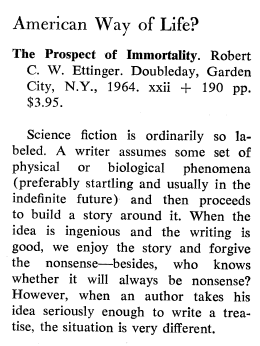 Enter Gerald Feinberg. In 1966, two years after Ettinger's book appeared, the Columbia physicist published an article called "Physics and Life Prolongation." This didn't appear in some obscure science fiction magazine but in the November 1966 issue of Physics Today, the monthly magazine of the American Institute of Physics. As such, it reached tens of thousands of scientists and science teachers. Feinberg himself was identified as a Columbia professor whose "main interests are elementary particles and quantum field theory." (It's important to remember that, in the mid-1960s, particle physicists, much more so than today, pretty much sat at the top of science's pecking order.)
Enter Gerald Feinberg. In 1966, two years after Ettinger's book appeared, the Columbia physicist published an article called "Physics and Life Prolongation." This didn't appear in some obscure science fiction magazine but in the November 1966 issue of Physics Today, the monthly magazine of the American Institute of Physics. As such, it reached tens of thousands of scientists and science teachers. Feinberg himself was identified as a Columbia professor whose "main interests are elementary particles and quantum field theory." (It's important to remember that, in the mid-1960s, particle physicists, much more so than today, pretty much sat at the top of science's pecking order.)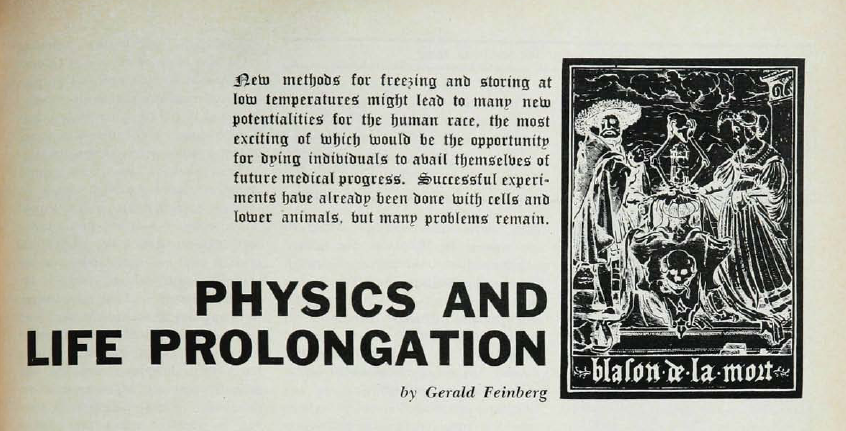 Feinberg began his article by noting the massive achievements that science and technology had made in the 20th century. Yet, the dream of the "elimination of aging and death remains unfulfilled." Taking an "optimistic estimate of future scientific progress," Feinberg introduces his readers to the possibility of "freezing, storing at low temperatures, and reviving humans."As evidence, Feinberg cited both Ettinger's book as well as a short story by Hungarian émigré physicist and gadfly Leo Szilard. In his 1961 book The Voice of the Dolphins, Szilard included a short science fiction piece called "The Mark Gable Foundation" in which a physicist, after emerging from two centuries of cryo-sleep, argues for the need to slow down scientific progress. Given Szilard's experience during the creation of the first nuclear weapons, it's not hard to imagine him making this argument.
Feinberg began his article by noting the massive achievements that science and technology had made in the 20th century. Yet, the dream of the "elimination of aging and death remains unfulfilled." Taking an "optimistic estimate of future scientific progress," Feinberg introduces his readers to the possibility of "freezing, storing at low temperatures, and reviving humans."As evidence, Feinberg cited both Ettinger's book as well as a short story by Hungarian émigré physicist and gadfly Leo Szilard. In his 1961 book The Voice of the Dolphins, Szilard included a short science fiction piece called "The Mark Gable Foundation" in which a physicist, after emerging from two centuries of cryo-sleep, argues for the need to slow down scientific progress. Given Szilard's experience during the creation of the first nuclear weapons, it's not hard to imagine him making this argument.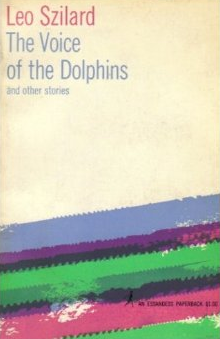 In the rest of his essay, Feinberg speculates on how human life might be prolonged by advances in cryobiology. It's an optimistic argument, augmented by Feinberg's belief that, when it comes to predictions, it's best to assume that "everything will be accomplished that does not violate known fundamental laws of science." This would become a standard argument for cryonics advocates thereafter - science doesn't say it isn't possible so, therefore, it quite likely is possible.Feinberg's article, riffing on Ettinger's book, advanced a stone cold version of Pascal's Wager. Essentially, even if the likelihood of revival was small, the potential benefits of cryonics far out-weighed the costs. And, if the experiment fails, what have you lost? As some cryonics promoters today phrase it, “Would you rather be in the experimental group or the control group?"For the first three months of 1967, Physics Today ran letters from readers responding to Feinberg's speculative science. Surprisingly, the reactions were measured and largely supportive. A graduate student in physics at the University of Pennsylvania, for example, concluded that the basic technical issue associated with freezing and then recovering biological organisms "does not seem insurmountable." Several of the letters dismissed issues of feasibility - could it be done? - and instead addressed whether it should be done.
In the rest of his essay, Feinberg speculates on how human life might be prolonged by advances in cryobiology. It's an optimistic argument, augmented by Feinberg's belief that, when it comes to predictions, it's best to assume that "everything will be accomplished that does not violate known fundamental laws of science." This would become a standard argument for cryonics advocates thereafter - science doesn't say it isn't possible so, therefore, it quite likely is possible.Feinberg's article, riffing on Ettinger's book, advanced a stone cold version of Pascal's Wager. Essentially, even if the likelihood of revival was small, the potential benefits of cryonics far out-weighed the costs. And, if the experiment fails, what have you lost? As some cryonics promoters today phrase it, “Would you rather be in the experimental group or the control group?"For the first three months of 1967, Physics Today ran letters from readers responding to Feinberg's speculative science. Surprisingly, the reactions were measured and largely supportive. A graduate student in physics at the University of Pennsylvania, for example, concluded that the basic technical issue associated with freezing and then recovering biological organisms "does not seem insurmountable." Several of the letters dismissed issues of feasibility - could it be done? - and instead addressed whether it should be done.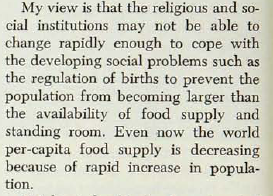 Here, the issue wasn't technical but rather moral and ethical. What about issues of over-population and food supply, for instance? Where would all of these frozen people be stored? Another writer echoed this point a month later:
Here, the issue wasn't technical but rather moral and ethical. What about issues of over-population and food supply, for instance? Where would all of these frozen people be stored? Another writer echoed this point a month later: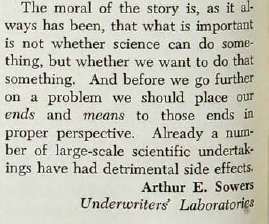 The March 1967 issue of Physics Today contained Feinberg's response to the points the readers' letters raised. The physicist concluded by affirming his belief that, while his proposal was doable, the real challenge was for the "human race" to decide "what goals it wishes to accomplish." Feinberg later repeated his conviction that humanity needed to identify long-term ambitions it could cooperatively pursue in his 1969 book The Prometheus Project, the subtitle of which was Mankind's Search for Long-Range Goals.
The March 1967 issue of Physics Today contained Feinberg's response to the points the readers' letters raised. The physicist concluded by affirming his belief that, while his proposal was doable, the real challenge was for the "human race" to decide "what goals it wishes to accomplish." Feinberg later repeated his conviction that humanity needed to identify long-term ambitions it could cooperatively pursue in his 1969 book The Prometheus Project, the subtitle of which was Mankind's Search for Long-Range Goals.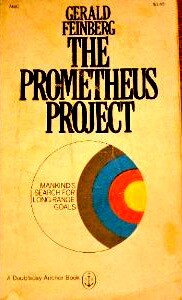 Feinberg remained committed to speculating on science and technology that lay over the horizon. For instance, he was one of the first board members of the Foresight Institute, a Bay Area non-profit founded in 1986 with the goal of promoting nanotechnology as a transformative technology for the 21st century. ((For fans of speculative physics, Feinberg's last accomplishment might be his 1967 article that proposed the existence of faster-than-light particles which he dubbed "tachyons." My UC colleague Colin Milburn has a great essay about this and the debt it owed to James Blish's 1954 story "Beep".))Events made Feinberg seem prescient. Just three months after his 1966 Physics Today article appeared, a retired psychology professor names James Bedford passed away in Glendale, California. Bedford’s words – “I’m feeling better” – would have been funny had they not been the last utterance of a dying man.After Bedford was pronounced dead, an anti-coagulant drug was injected into him while a mechanical heart maintained blood flow. Other chemicals followed. Six hours later, his body wrapped in aluminum foil was placed in dry ice before members of the Cryonics Society of California transferred it to a “cryo-capsule” for transfer to storage center in Arizona.
Feinberg remained committed to speculating on science and technology that lay over the horizon. For instance, he was one of the first board members of the Foresight Institute, a Bay Area non-profit founded in 1986 with the goal of promoting nanotechnology as a transformative technology for the 21st century. ((For fans of speculative physics, Feinberg's last accomplishment might be his 1967 article that proposed the existence of faster-than-light particles which he dubbed "tachyons." My UC colleague Colin Milburn has a great essay about this and the debt it owed to James Blish's 1954 story "Beep".))Events made Feinberg seem prescient. Just three months after his 1966 Physics Today article appeared, a retired psychology professor names James Bedford passed away in Glendale, California. Bedford’s words – “I’m feeling better” – would have been funny had they not been the last utterance of a dying man.After Bedford was pronounced dead, an anti-coagulant drug was injected into him while a mechanical heart maintained blood flow. Other chemicals followed. Six hours later, his body wrapped in aluminum foil was placed in dry ice before members of the Cryonics Society of California transferred it to a “cryo-capsule” for transfer to storage center in Arizona.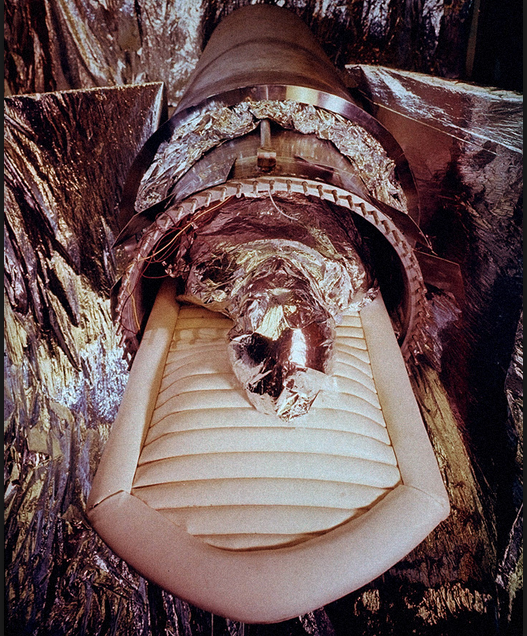 And Gerald Feinberg? He died relatively young in 1992 from cancer at the age of 58. Despite whatever academic enthusiasm he had for cryonics, Feinberg did not wager on being frozen. ((As reported in the June 1992 issue of Cryonics))Author's Note: This short essay was inspired, in part, by writing I did for my Visioneers book and, more recently, for an upcoming workshop at Princeton University called Histories of the Future. This website contains several other essays that explore the border between science, science fiction, and speculation. Check it out...Also, if any readers knew Feinberg, I'd be interested to hear from you. There's not much information available about him and I don't see any sign that his papers went to Columbia.
And Gerald Feinberg? He died relatively young in 1992 from cancer at the age of 58. Despite whatever academic enthusiasm he had for cryonics, Feinberg did not wager on being frozen. ((As reported in the June 1992 issue of Cryonics))Author's Note: This short essay was inspired, in part, by writing I did for my Visioneers book and, more recently, for an upcoming workshop at Princeton University called Histories of the Future. This website contains several other essays that explore the border between science, science fiction, and speculation. Check it out...Also, if any readers knew Feinberg, I'd be interested to hear from you. There's not much information available about him and I don't see any sign that his papers went to Columbia.